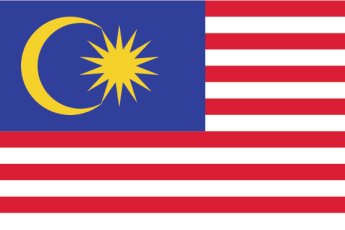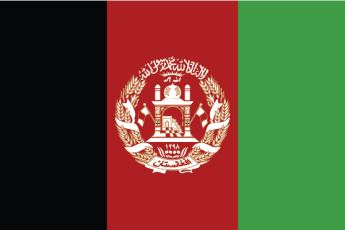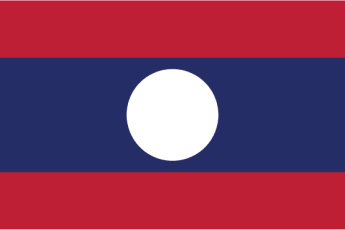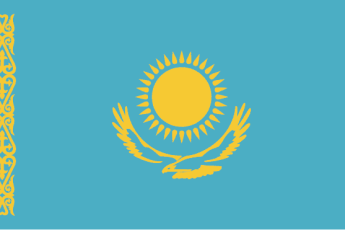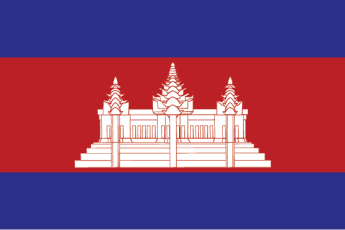Why Choose Indian Brides?
There are many reasons to choose an Indian bride. Indian bridal outfits are generally bright and colorful and can be uncomfortable for the bride. Not all skin tones will agree with these colors, so make sure to try on several different outfits to find the perfect one for your complexion. Ultimately, this wedding is about the bride and her groom. But there are other factors that you should consider. In this article, you will learn about the traditional Indian wedding.
Traditional Indian weddings
Hindu weddings are ritualistic ceremonies that begin with the Lord Ganesh Puja, a prayer offered to the deity by the bride’s parents. The ceremony is not considered complete without the blessings of the god. Here are the details of this religious ceremony. Read on to find out more about this important Hindu tradition. The Hindu wedding ceremony begins with the groom’s parents performing the Lord Ganesh Puja at the bride’s home two to three days before the wedding ceremony.
Dresses
Bridal Lehengas are the ultimate in traditional Indian wedding fashion and are perfect for a wedding reception and mehndi. These gorgeous wedding gowns are available in chiffon and georgette and are perfect for every event. For more ideas on what to wear on your wedding day, check out our list of designer bridal dresses. Let the images below inspire you. This is an essential item in every Indian bride’s wedding trousseau.
Mandaps
There are many different types of mandaps to choose from, and you can use flowers as your main decor. They will not only add beauty and scent to your ceremony, but will also serve as a centerpiece for your wedding. Various flowers are placed on the pillars, and religious offerings are arranged near the sacred fire. Some of these mandaps are made of fabric or chandeliers, and others are crafted in intricate designs.
Mehndi ceremony
The Mehndi ceremony for an Indian bride usually involves bright colors and is generally a fun event. The bride may choose specific colors for her bridesmaids and family members to wear. Women are encouraged to wear bright colors and jewelry, while men will typically wear salwar kameez and a matching colored shawl. Men should wear an outfit that is consistent with their gender identity. If there are no women in the wedding party, the guests can wear clothes that reflect their appearance.
Flower jewelry
Flower jewelry can be very beautiful and is the perfect way to make your wedding day look perfect. Flowers are the best material for floral jewelry, and they can come in different forms and sizes. The most common floral type is a small bloom, which is great for brides with high ankle-length dresses. Other floral styles can be found in magazines, and can range from larger flowers to delicate little blooms. The flowers themselves should compliment the rest of the bride’s attire, as well as her hairstyle.
Lehenga
Purchasing an Indian bridal lehenga is a major task, but the best thing to do is to buy the best one in your price range. You can find some amazing deals online, and most e-commerce websites have excellent customer service and the ability to negotiate customizations. It’s worth the extra time to find the right designer, and then choose the one who will meet your unique needs. Read on to learn why you should go with an Indian bridal designer.
Be Chivalrous When Dating Indian Girls
There are some basic rules that you must follow when dating an Indian girl. Indian girls are very attracted to confident men, so don’t be rude or arrogant. Just compliment her looks, humor, intelligence, and other aspects of her life. Be yourself and don’t try to change her life or make her feel inferior. In this culture, women are extremely conservative, so respect her family’s values and culture. Also, don’t intrude on her professional choices.
Be chivalrous
The first step to be chivalrous while dating an Indian girl is to understand what she values. Indian women are not interested in clingy or possessive men. They are more interested in men who respect and appreciate their women. Be chivalrous when dating Indian girls by showing respect to your partner and his friends. Being chivalrous towards your partner does not violate chivalric ideals and is polite.
Chivalry is an ideal of male-to-female relationships. This concept is rooted in the ancient traditions of knights and their chivalry. It is an ideal that embodies manly masculinity and shows care for others. It makes a lot of sense in the Medieval world and in later societies, where taking from the rich to give to the poor rewarded men with the goodwill of the working masses. Women were also supposed to need protection, and men should show them respect.
Respect her family
One of the most important things that you should do when dating an Indian girl is respect her family. The Indian culture is rooted in respecting family, and it’s vital that you get their blessings before you begin dating. You can easily win over an Indian girl’s heart by showing her respect and getting on her family’s good side. Here are some ways that you can do that. And once you’ve earned her trust, you can then proceed with dating her family.
Be patient and polite. Indian women are very sensitive, and rudeness can make them uncomfortable. You don’t want to start a relationship with her if she gets upset. Remember that her family has many values, and if you don’t respect theirs, she won’t be interested in romance. Indian girls are incredibly beautiful, and if you can respect their culture, you’ll get your dream girl!
Do not be desperate
You should not appear desperate when dating an Indian girl. The reason for this is that Indian women do not like public displays of affection and would probably prefer a man from their network of friends. It is also safer to approach a woman from a friend’s circle as she will know you and would be less likely to harass you or make you feel desperate. In addition, women in India are very suspicious of men and can be easily turned off by men they do not know.
Unless you’re desperate to date an Indian girl, you’ll probably end up disappointed. Indian women often live with their parents until marriage. If you’re looking for a serious relationship, you should avoid approaching their parents until the relationship is solidly established. In general, Indian women do not take badly to being treated like dirt. They will consider your intentions very carefully, and you should also keep in mind that their culture is very family-oriented. Indian parents will even give you a nickname.
How to Attract Indian Women for Marriage
When you decide to marry a woman from India, you will be faced with many questions. What are their traditional clothes? What are their sense of humor and loyalty to their partners? These are some of the questions that you must answer in order to attract an Indian woman to your life. Ultimately, it will depend on you to find an Indian woman who has the qualities you are looking for. If you are serious about finding a suitable Indian wife, you will have to take your search to the next level.
Traditional attire of Indian women
One of the most popular Indian bridal outfits is the saree. The saree, also known as shari or sari, is a sari-like garment with a long, flowing drape that falls around the waist. It also covers one shoulder and barges the midriff. Often, the saree is worn with a choli or parkar. This type of attire dates back to the Indus Valley Civilization, which began around 2000 BC. The word sattika, used for women’s clothing in early Buddhist literature, has evolved into saree.
Another traditional Indian wedding outfit is the lehenga. Indian brides typically choose not to wear white or ivory, instead opting for a rich, colorful sari. Red is the color of choice because it represents happiness and good luck, though modern brides often choose other colors for their wedding. They usually wear elaborate gold embroidery and crystal embellishments on their lehengas, and often drape themselves with a lavish head scarf and a large amount of jewelry.
Their natural beauty
A man who is seeking a wife from the West should consider marrying an Indian woman because they have a lot of qualities to offer in a life partner. Apart from being beautiful on the outside, Indian women are extremely intelligent and faithful. The main reason for their natural beauty is that they are taught from a very young age that bearing children is the primary purpose of life. This is why they attract most men regardless of their colour or race.
Historically, Indian women have been viewed as beautiful primarily for their beauty and their ethnicity. The pristine skin, long hair, striking eyes, and perfect facial proportion are just some of the features that make Indian women attractive to potential spouses. Indian women are also well-endowed with many other physical qualities, including good health and wealth. However, if you’re a man who values your time, you should be aware of the limitations of a foreign-born woman’s beauty.
Their sense of humor
One sign that Indian women for marriage are good with men is a sense of humour. Studies have shown that men who laugh with their partners are happier in marriage. Humour also helps people deal with life’s many challenges. In a study, researchers studied 60 newlywed couples, noting how often they used humour in their discussions. They also asked the couples to complete a stress assessment before they were followed up 18 months later. Men with a sense of humour were more likely to stay together and have fewer problems in their marriage.
Women are often the target of male jokes. Eve was even sexier than Adam, because she volunteered her rib to be donated to Adam. Men view women who are able to laugh in public as easy prey. It’s no wonder, then, that Indian women for marriage have a sense of humor! And that’s just the beginning! But what about those who don’t?
Their loyalty to their partners
The study examined 1,500 married Indians from various cities, including Delhi, Mumbai, Bengaluru, Chennai, Hyderabad, Pune, Kolkata, and Ahmedabad. Of the couples, over 50% were married in a forcible manner and half had a history of mental illness. In five marriages, both partners had mental disorders. It was also found that the consent to marriage was obtained via force, proxy, or fraud.
The study also uncovered a surprising fact – Indian women are very loyal to their partners. Despite the high levels of loyalty, they rarely leave their homes. Women spend most of their time cooking, tending their courtyard gardens, and raising their children. Some women even pass dinner through a curtained doorway. This reveals a lot about Indian women. Even though Indian women are traditionally shy and reserved, they show loyalty to their partners by not speaking in front of strangers.
Their conservative values
While India’s youth is becoming more progressive, Indian women for marriage still have conservative values. In 2007, for example, a survey by the Konrad Adenauer Stiftung and Centre for Study of Developing Societies found that 59% of respondents thought that women should not work after marriage and that they should listen to their husbands. While these trends have changed, many Hindu women are still very conservative. But this does not mean that they are against marriage.
Indian Wedding Traditions
Many Hindu and Punjabi weddings have a similar ceremony called Jaimala, or Mala Badal. During this ceremony, the couple wraps a silver thread around each other’s hands and a pandit recites Vedic chants. After the chants, the couple sits in front of a fire and walks around it seven times. The couple then offers an offering, called anjali, which is puffed rice, into the fire. The groom then applies sindoor (white powder) on the bride’s forehead.
Mehendi ceremony
Traditionally, the bride’s hands and feet are covered with a green mehendi paste. This application calms the bride’s nerves and keeps her safe and well-rested until her wedding. The bride’s mehendi designs are usually more elaborate than the bride’s own. The groom is expected to find the bride’s initials hidden in the mehendi. It is an ice-breaker game for the bride and groom-to-be, and also establishes a sense of intimacy.
The bride must bring the Mehendi to the wedding ceremony. In some countries, the groom must also send the bride gifts. In India, the Mehendi ceremony lasts for three to four hours. In many places, the bride’s Mehendi is applied to her palm, forearm, feet, and arms. The bride must then wait a few hours before she is allowed to wash off the Mehendi.
Tilak ceremony
The Tilak ceremony is an important part of an Indian wedding. It symbolizes the marriage between the bride and groom. This ceremony is performed by the bride’s parents and the officiating priest. The officiating priest chants verses in Sanskrit to bless the couple and the new couple. The bride’s parents place their daughter’s right hand into the groom’s right hand. The bride’s parents then pray to the Lord to bless the couple and make their marriage successful.
Traditionally, the bride’s family and the groom’s family offer gifts to the bridegroom. The bride’s family will usually offer sugar, coconut, rice, clothes, and jewelry. The groom’s family will also present the bride with jewelry. The groom’s family will carry these gifts to the bride’s house. The ceremony will end with refreshments and a grand dinner for the newlyweds.
Barni Band-hwana ceremony
The first step of the Indian wedding rituals is the Barni Band-hwana ceremony. This ritual involves tying a Mauli thread around the hands of the bride and groom and asking for good luck on their wedding day. This is followed by the mother of the bride and the groom’s maternal uncle bringing the wedding dresses for the mother of the bride and groom. Barni Band-hwana takes place 15 days before the wedding.
During this ceremony, the bride and groom sit under a mandap. This mandap has elaborate decor, which represents the four parents of the bride. The bride’s maternal uncle walks her down the aisle, while the groom’s brother places a small pile of rice on each of her hands. The groom’s brother then places the rice into the fire pit, which represents the four major goals of their marriage. A sacred fire is also lit under the Mandap to honor the god of fire.
Mangal pheras ceremony
A Mangal pheras ceremony is a Hindu wedding tradition where the bride and groom take turns leading each other around a sacred fire. The ritual is designed to represent four pillars of a harmonious married life: dharma, artha, kama, and moksha. As they walk around, the bride and groom chant mantras and run for their seats. The first three pheras are led by the bride and the last one by the groom. The ceremony culminates with the bride and groom making four circles around the sacred fire, each representing a particular virtue in the Hindu religion. The ceremony also includes the saptapadi, the second most important Hindu ritual.
The first part of the Hindu ceremony involves lighting a holy fire in the mandap. The couple then prepare to make four rounds around the fire. This is known as the havan and the fire symbolizes the god of fire, Agni, the main witness of the marriage. The couple then sits on new mats in front of the fire to exchange their vows. A wedding ceremony is not complete without this ceremony, and the couple must attend the ceremony to get married.
Mooh Dikhai ceremony
The Mooh Dikhai ceremony is a traditional Hindu marriage ritual that is performed by the bride’s family. It consists of a grand ceremony that is held at the bride’s village where relatives and friends shower the newlyweds with gifts. In ancient times, the bride’s face was covered with a veil. The ceremony is a celebration of love, togetherness, and union.
During the ceremony, the bride’s mother does an arti on her bride using a pitcher of water. She refuses to drink the water, but relents after performing the seventh circle. Next, the bride’s family takes the newlyweds to a deity to seek their blessings. Then, the bride sits in front of her family for blessings. She also touches the feet of her family members, who then shower her with gifts.
Laja homa ceremony
In an Indian wedding, the bride’s brothers pour rice on the bride’s palms and offer it to the sacrosanct fire. She then prays to the gods for a long and happy married life and fertility. The bride’s brothers also recite five Veda mantras to the god Agni. The ceremony ends with the couple untying their darbha belt.
The groom then recites three mantras to bless the bride. He invokes Soma, Gandharva, and Agni and asks them for their blessings. He says these mantras will bring strength, beauty, and youth to the bride. The bride then accepts her seat to the bridegroom’s left. Both the bride and groom sit facing each other and he places his hand on her shoulder.

